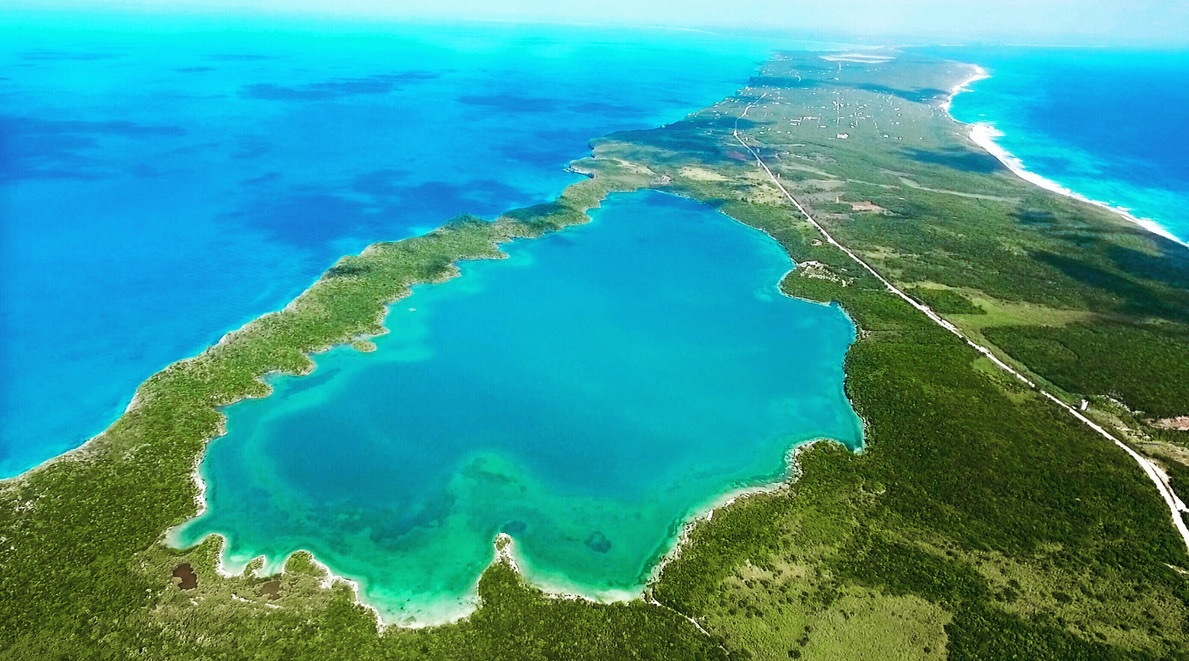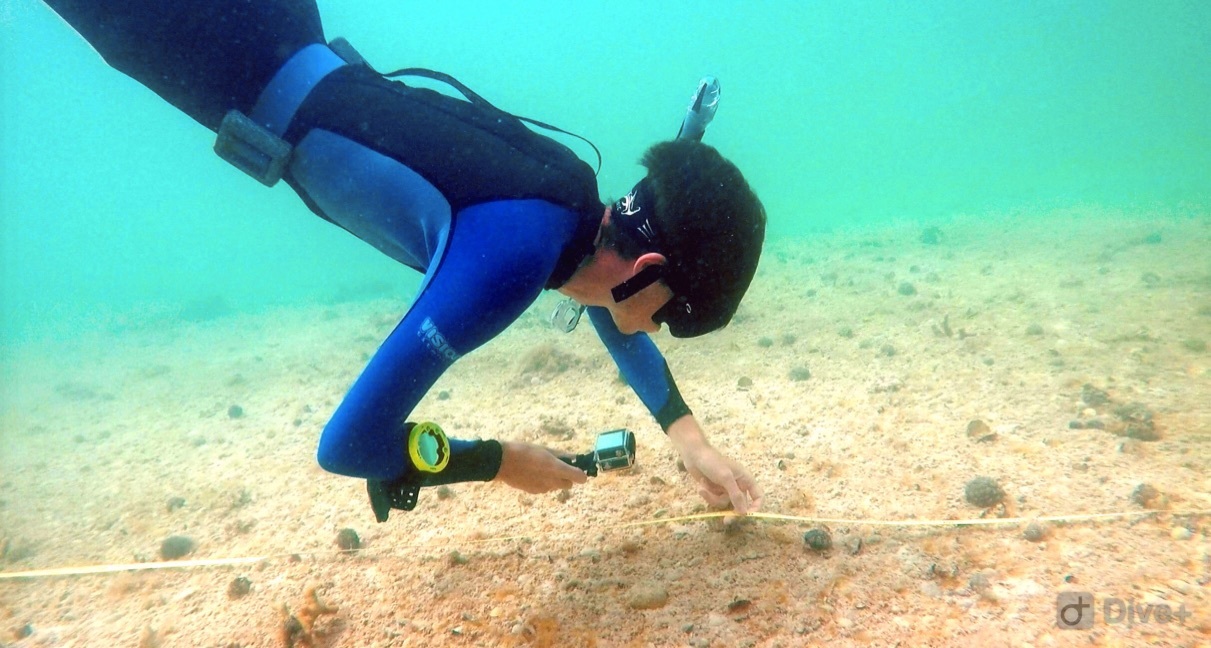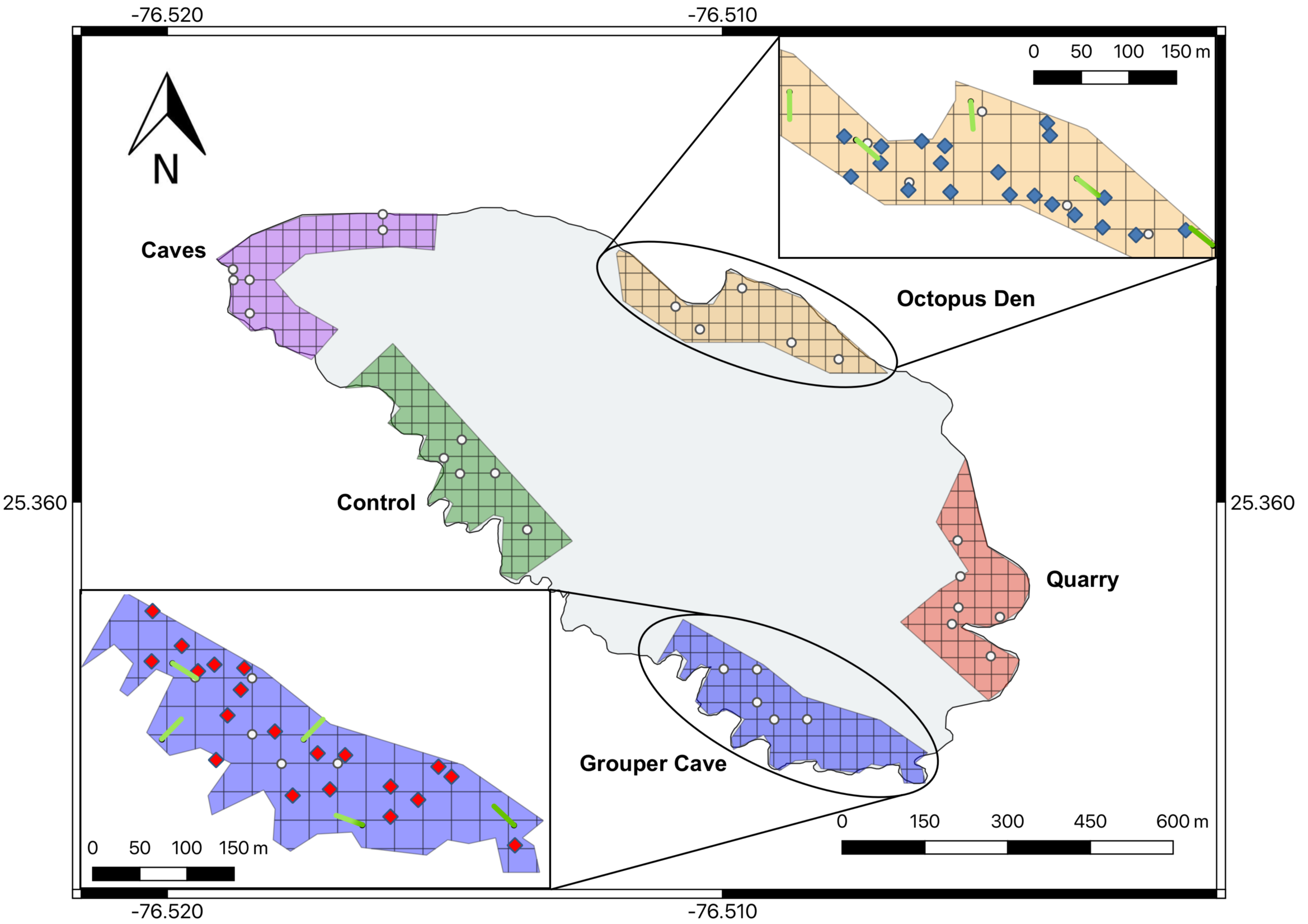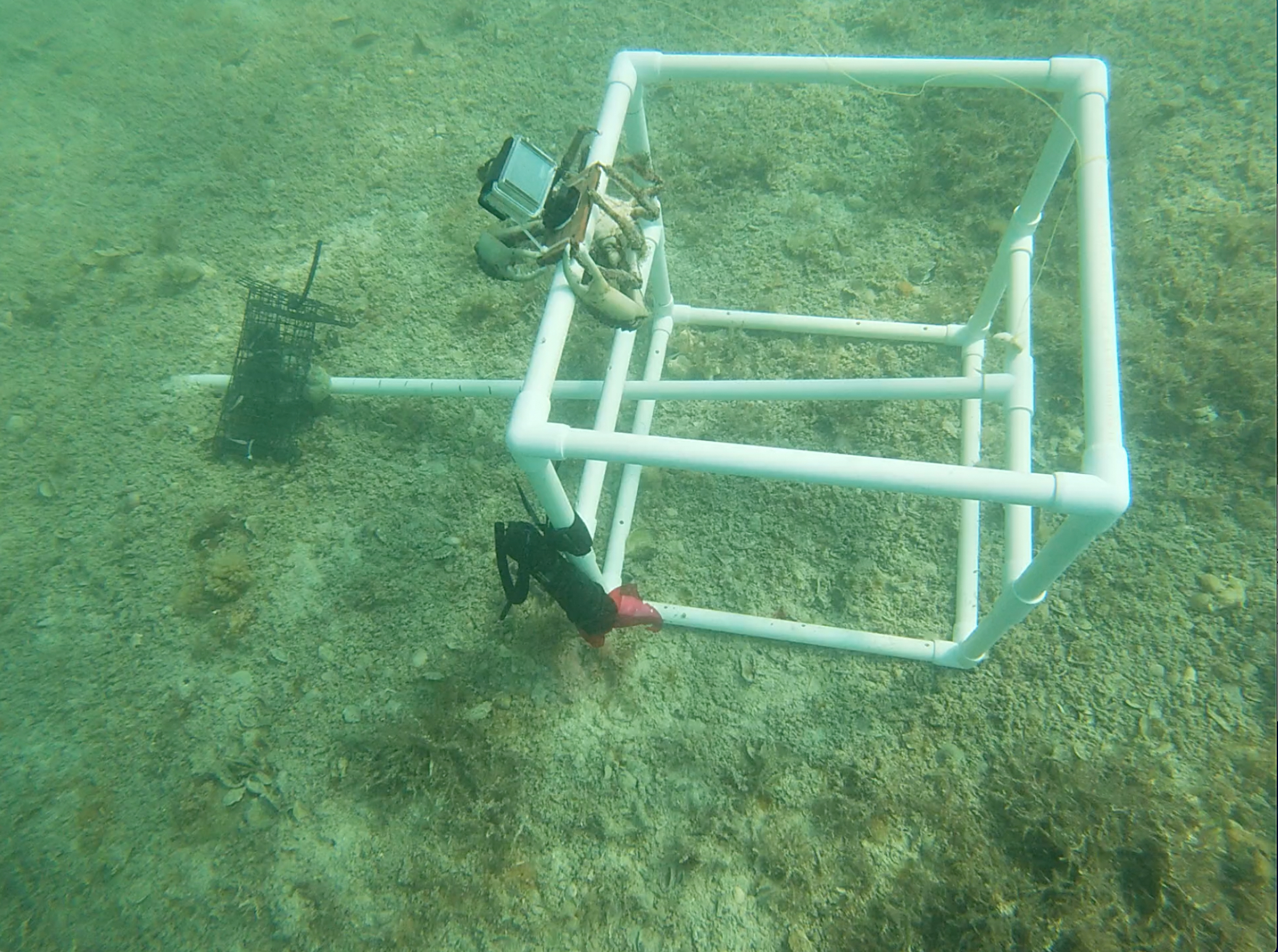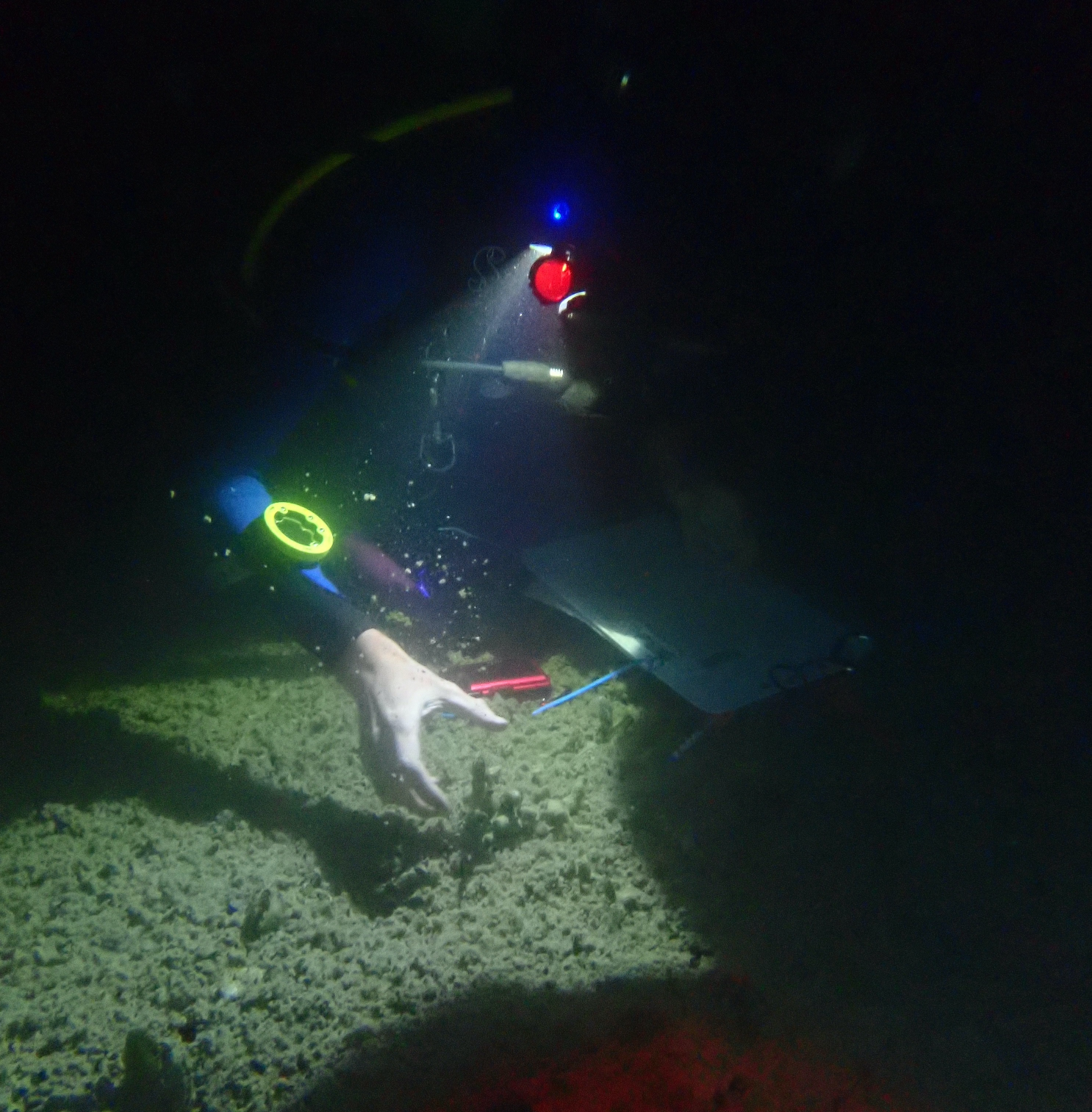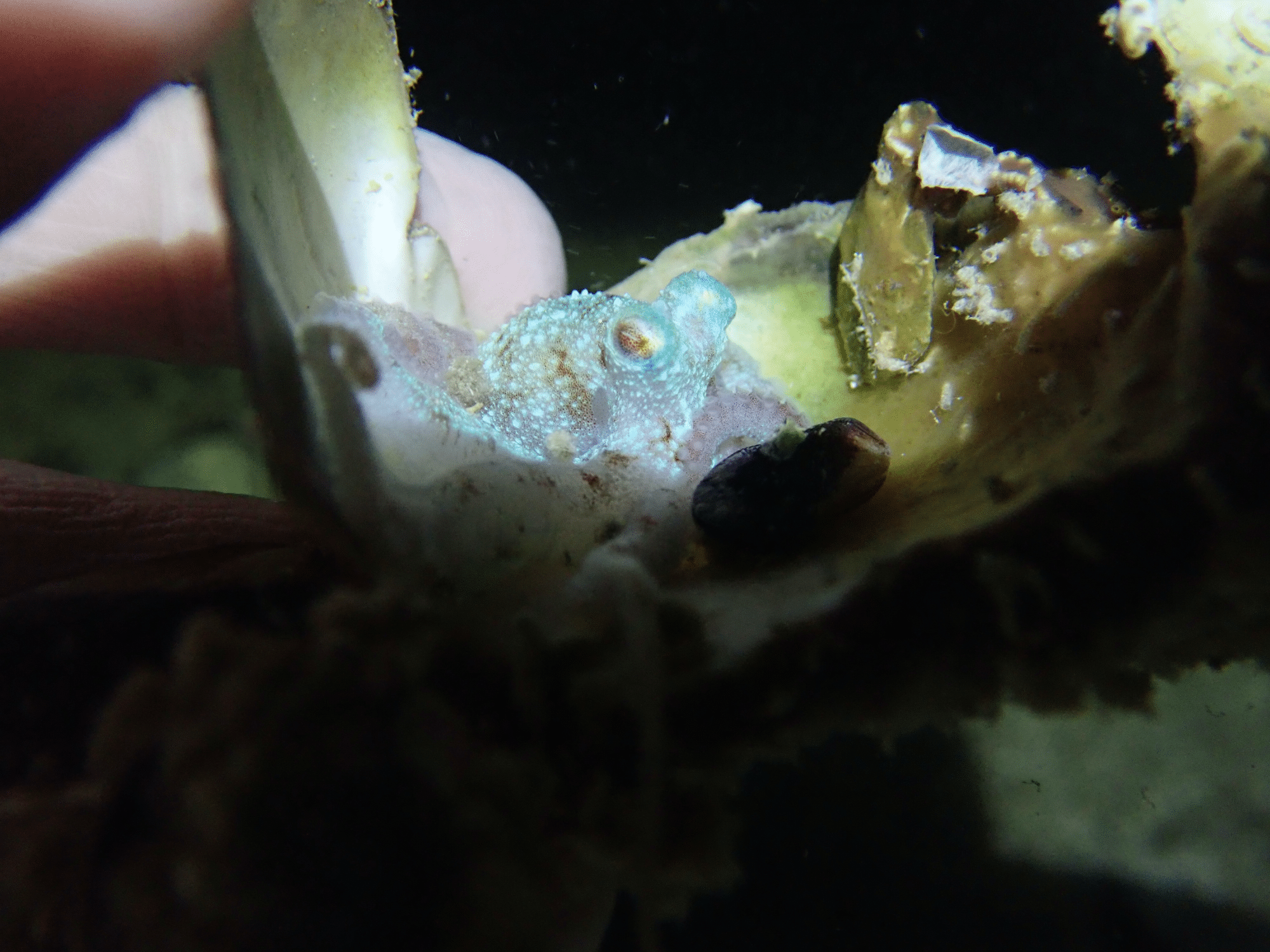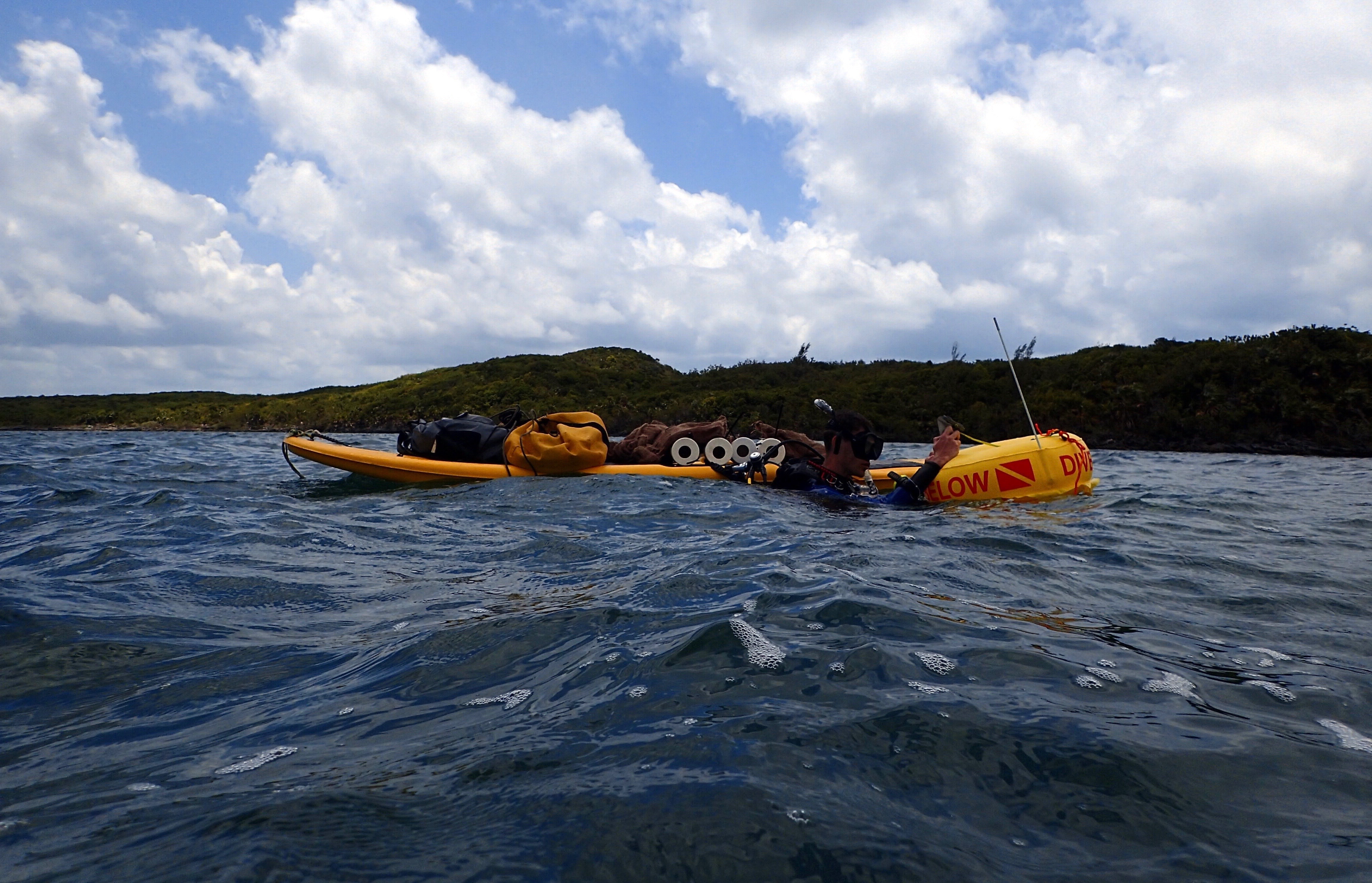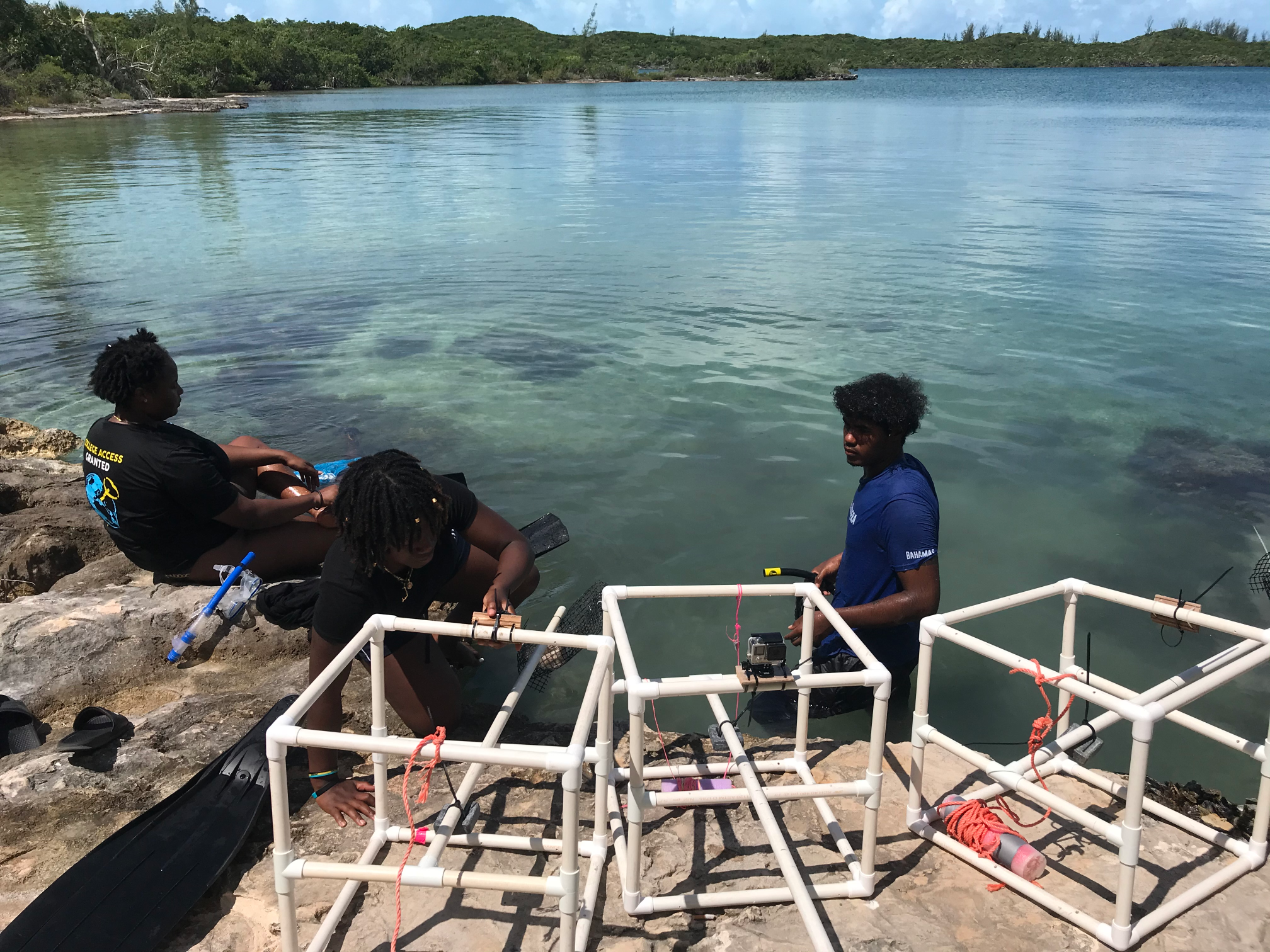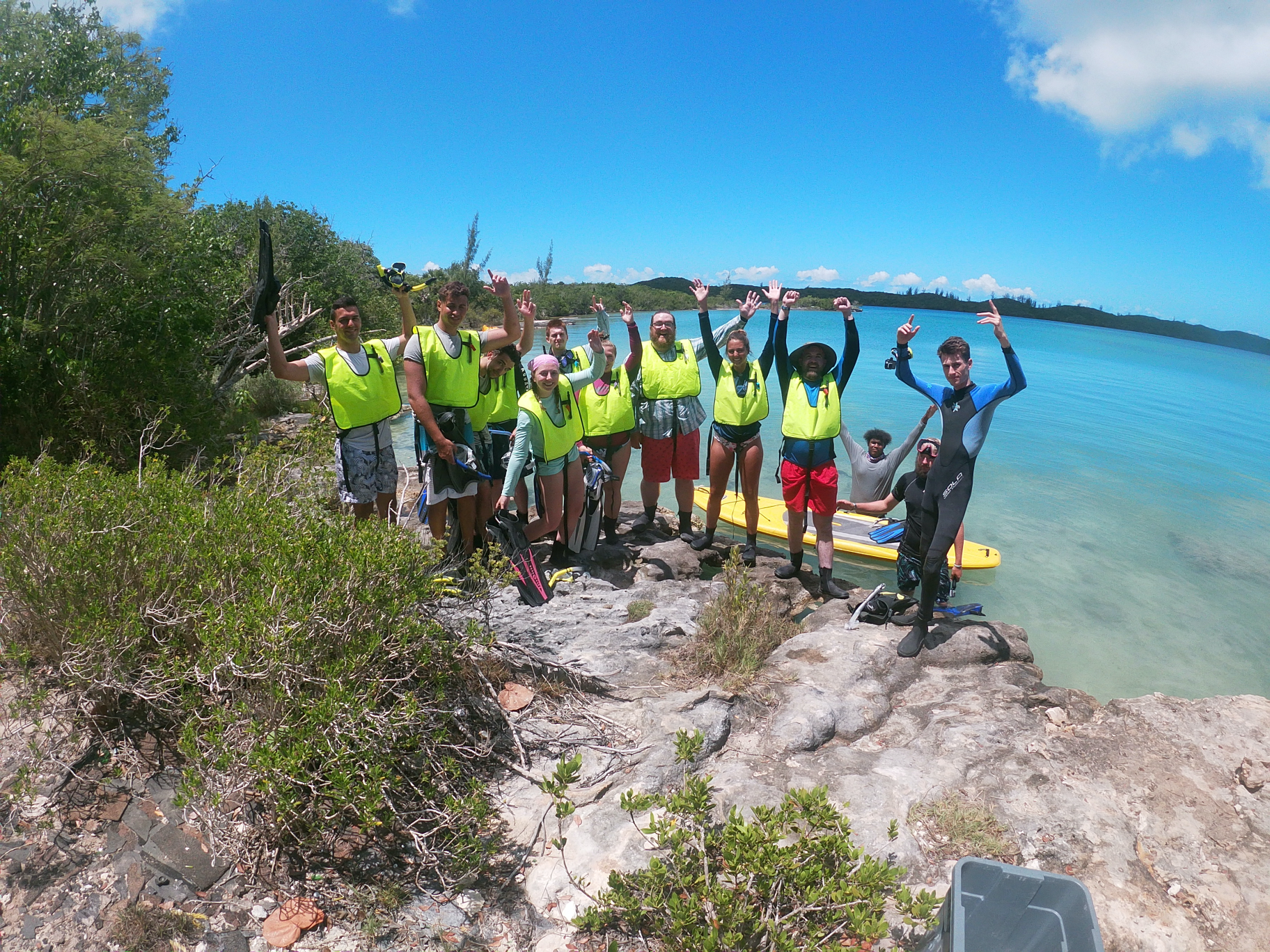Four peer reviewed publications (Mason et al. 2023, O’Brien et al. 2021a, O’Brien et al. 2021b & O’Brien et al. 2020), the site being protected as a National Park by the Bahamian National Trust, and ~30 local and international young citizen scientists.
Survey process
- Habitat assessment
- benthic, environmental, and fish surveys were performed to generate baselines for future management.
- involved snorkeling, SCUBA, underwater transects, and Baited Remote Underwater Video (BRUVs).
- Seahorse specific SCUBA surveys (day and night)
- Octopus survey and social behaviour experiments
Seahorse surveys
Seahorse National Park supports the highest density of seahorses in the world and was the initial launchpad for the protection of the lake.
I worked alongside Prof. Mason @the University of Tampa, to perform day and night transects for lined seahorse.
These surveys updated previous estimates to support the Bahamas National Trust’s lobbying of the Bahamian government. The surveys also identified the likely places these animals live and what predates them.
I maintained equipment, made multiple day and night dives, and performed underwater SCUBA surveys during this project.
The findings of this work are published in Ecology and Evolution.
Octopus surveys
Octopus surveys made in collaboration with the Center for Ocean Research & Education built upon observations made in the 1980s that Seahorse National Park also supports a high density octopus population.
I designed SCUBA surveys, benthic quadrats and social behaviour experiments to verify this finding and test the hypothesis that high densities changes how asocial octopus are.
Octopus are thought to be asocial - i.e. they are neither attracted to nor avoid other memebers of their species.
I replicated the original 1980s census and showed that rather than being social, octopus within the lake actively avoided each other. This implies antisocial behavior rather than asocial.
The findings of this work are published in the Journal of Experimental Marine Biology & Marine Biology.
Citizen science
Young people were encouraged to contribute to the data collection process. Local students were particularly encouraged to take part, with one individual becoming a co-author on the final publications due to their large contribution.
Local people also became increasingly enamoured with the lake. Traditionally this site was seen as undesirable place, with myths around a kraken and giant eel living inside (possibly due to the agressive nature of some of the octopus)!
Public talks, tours, and citizen science supported by the Centre for Ocean Research & Education all helped improve the community’s perception of the lake into one of local pride worthy of protection.
